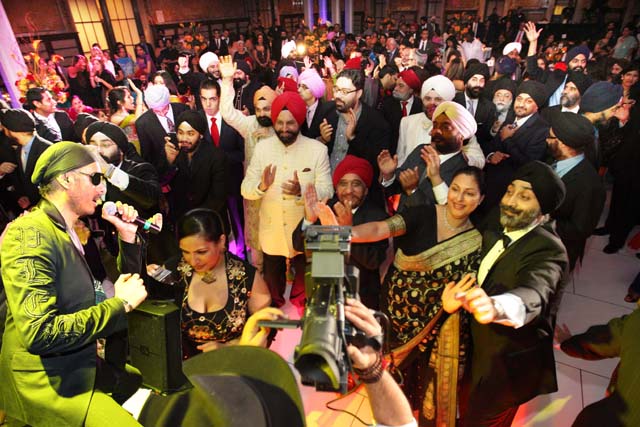
Sikh Art and Film Foundation
A decade ago it would have been unimaginable that the beat of bhangra drums would be heard reverberating from the hundred-year-old New York Public Library, the city’s Beaux Arts landmark building, until the late hours of the night. Well, this too came to pass with the grand gala concluding the two-day International Sikh Film Festival where power people, artists and film-makers gathered to celebrate not only the cinema arts but the role of Sikhs in every sphere of life…
It is remarkable how little is really known about the Sikh culture in the outside world, and it was an opportunity to learn something new every day at this festival organized by the Sikh Art and Film Foundation, which is headed by Tejinder Singh Bindra.
The kick-off was an exhibition of photographs from ‘Tryst with Trees – Punjab’s Sacred Heritage’, a book by D.S. Jaspal, which was launched at the Indian Consulate.
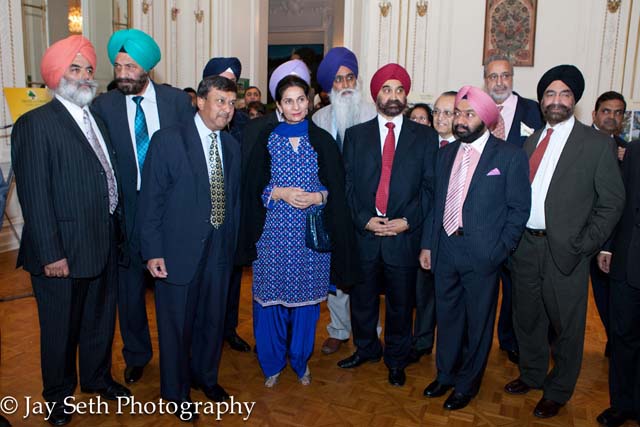
In fact, few people know that about 52 of the gurudwaras or Sikh shrines are named after 19 species of trees. Thus you have names like Gurdwara Imli Sahib, Gurudwara Ber Sahib and Gurudwara Nim Sahib, and there is more on this fascinating story at www.trystwithtrees.com
The Sikhs have a long, reverential relationship with nature and many of these trees, which offer shade and medicinal benefits, grow within the gurudwara complex. It is a beautiful part of Sikhism and the images show the bond between humans and nature. The chief guest at this launch was Preneet Kaur, India’s Minister of State for External Affairs, and as she pointed out, this was a perfect book for a time when we are heading into an environmental crisis.
On opening night, the Sikh Film Festival at Asia Society screened three powerful films which again had many nuggets about Sikhism which would not be known to most people. Vikas Khanna’s ‘Holy Kitchens – True Business’ is almost a meditation, a poem to the ritual of langar or meals which are shared by the entire community. Rich or poor, all sit in the same line to be served these free meals at the gurudwara, and to serve in these kitchens is an honor for Sikhs. For those who have never been to Amritsar, the film is a virtual pilgrimage to many of the gurudwaras in India, including the crowning jewel, the Golden Temple in Amritsar.
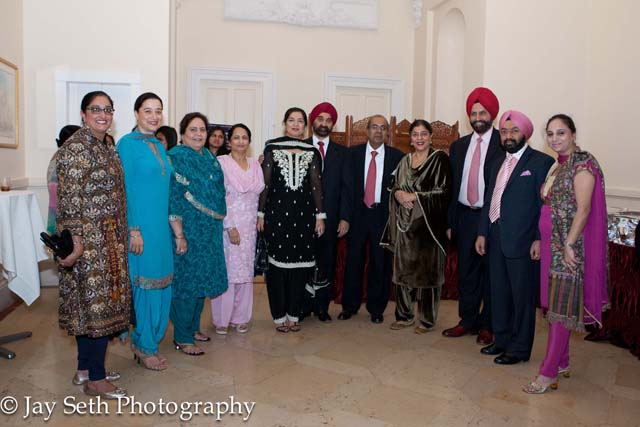
‘Harvest of Grief’ by Rasil Basu is a disturbing, poignant film which cannot but move one. Most of us are aware of farmer suicides in the rural areas of India but few know that many of these tragedies are taking place in Punjab – long considered the breadbasket of India. This documentary takes viewers into the lives of families where the male provider has committed suicide, leaving behind devastated widows and children ill-equipped to deal with life.
Sikh Film Festival – a glimpse: Rebel Queen
The third film ‘Rebel Queen’ by Michael Singh is a look at the brave and feisty Rani Jindan, wife of Maharaja Ranjit Singh and mother of the last Sikh ruler, Dalip Singh. How she stood up to the British makes for a strong story. Indeed, through these films one learned many things – tragic as well as celebratory – about the community. From partition to the angst of 1984, from farmers’ suicides to the death of the girl child, the Sikh Film Arts Festival, chaired by Dr. Amritpal S. Johar, explored many hot button issues. As he notes, “We have made it our mission to incorporate diverse aspects of the Sikh tradition, culture, heritage – as well as social issues – into our program, and ultimately realize the goal of cultural, religious and interpersonal awareness.”
Sikh Heritage Gala
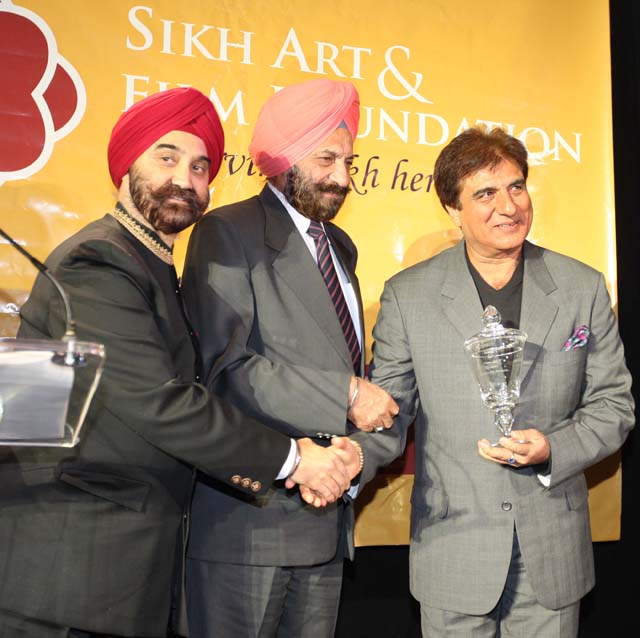
Besides the three features, there were several documentaries on equally important issues including ‘Nothing is Impossible’, ‘Cancer Express’, ‘Riding the Tiger’, ‘Why are we Killing our daughters?’ and ‘Stranded in the Strait’ (A work in Progress). The winner in the documentary films section was ‘Khanabadosh’, a searing look at partition and the 1984 anti-Sikh riots through the eyes of writer and activist Ajeet Caur and her daughter, the noted artist Arpana Caur.
The Sikh Heritage Gala at the New York Pubic Library probably marked the first time an Indian event was held at this beautiful building, with cocktails on the main floor and dinner in the Celeste Bartos Forum. The evening honored three noted Sikhs: Raj Babbar, Member of Parliament and movie actor (he has recently completed a TV series on Maharaja Ranjit Singh which is being shown on Doordarshan); Padmashree Vikramjit Singh Sahney, entrepreneur and educationalist, whose short film ‘Save the Girl Child’ was shown at the festival; and Arpana Caur, artist and humanitarian.
Sikh Heritage Gala – Arpana Caur’s Sacha Sauda
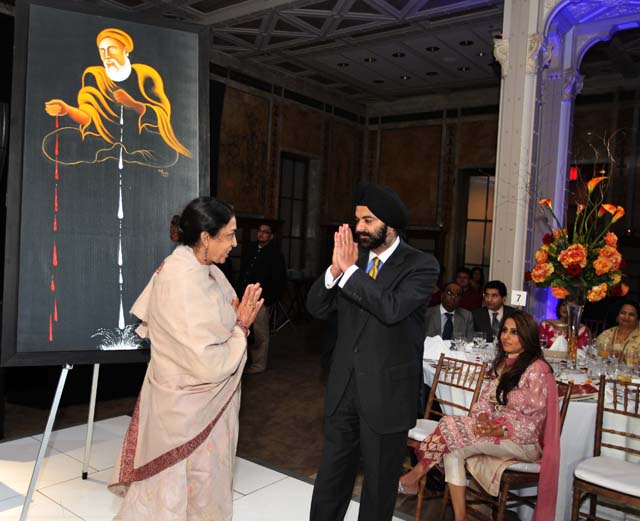
Later a painting by Caur, ‘Sacha Sauda’ which was specially created for the event, was auctioned. It went for $16,000 – bought by Ajay Banga, CEO of MasterCard. (He paid for it with his MasterCard, of course!) A cricket bat signed by the Indian cricket team was auctioned for $11,500, half the proceeds of which went to the charity ‘Khushi’.
The highlight of the evening was the throbbing, very danceable music of Sukhbir live. The noted singer, known as the Prince of Bhangra, had especially flown in from Dubai and kept the guests thoroughly engaged. As the gala ended, a lively after-party which lasted till 2 am got into gear. The frentic mix of music, heightened by Bhangra dhols, floated down Fifth Avenue. Quite an evening!
